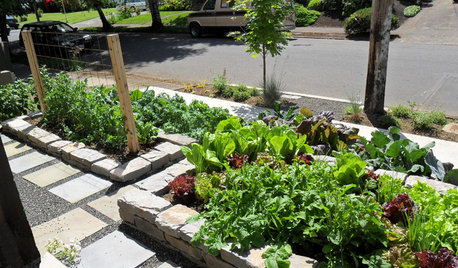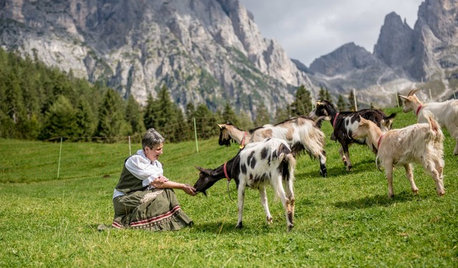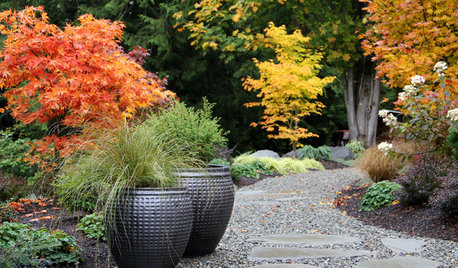Rabbit Food
mark_in
14 years ago
Related Stories

FARM YOUR YARD6 Things to Know Before You Start Growing Your Own Food
It takes time and practice, but growing edibles in the suburbs or city is possible with smart prep and patience
Full Story
FRONT YARD IDEASWelcome Edibles Into the Front Yard for Fresh Food and More
Give your front yard design a boost and maybe even make new friends by growing fruits and vegetables
Full Story
KITCHEN DESIGNKitchen Counters: Try an Integrated Cutting Board for Easy Food Prep
Keep knife marks in their place and make dicing and slicing more convenient with an integrated butcher block or cutting board
Full Story
GARDENING GUIDESHouzz TV: Make a Worm Bin for Rich Soil and Happy Plants
A worm-powered compost bin that can fit under a sink turns food scraps into a powerful amendment for your garden. Here’s how to make one
Full Story
LIFEHow to Prepare for and Live With a Power Outage
When electricity loss puts food, water and heat in jeopardy, don't be in the dark about how to stay as safe and comfortable as possible
Full Story
FARMHOUSESWorld of Design: See How 9 Families Live and Farm on Their Land
Join us as we visit the homes and farms of passionate food producers and hear about rural life around the globe
Full Story
PLANTING IDEASGreat Garden Combo: Fall Foliage With a Contemporary Twist
This fiery autumnal display relies on simplicity and ample spacing to create a distinctive panorama
Full Story
EDIBLE GARDENSNatural Ways to Get Rid of Weeds in Your Garden
Use these techniques to help prevent the spread of weeds and to learn about your soil
Full Story
GARDENING GUIDESThe Poop Scoop: Enrich Your Soil With Good Old Manure
Get over the ick factor already — this natural super-ingredient for soil has so many benefits, you'll wonder why you ever went chemical
Full Story
CONTAINER GARDENS7 Deer-Resistant Flowers for Your Summer Containers
Grow these as protection for edibles or just for their colorful beauty — deer might not like them, but everyone else will
Full Story





dchall_san_antonio
mark_inOriginal Author
Related Professionals
Deer Park Landscape Architects & Landscape Designers · Summit Landscape Architects & Landscape Designers · White Oak Landscape Architects & Landscape Designers · Wakefield Landscape Contractors · Braintree Landscape Contractors · Federal Way Landscape Contractors · Hurricane Landscape Contractors · Lake Zurich Landscape Contractors · Secaucus Landscape Contractors · Dickinson Swimming Pool Builders · Cartersville Fence Contractors · Cherry Hill Fence Contractors · Coram Fence Contractors · Palm Harbor Fence Contractors · Simi Valley Fence ContractorsGags
dchall_san_antonio
mark_inOriginal Author